Information Gathering Processes (Field Studies)
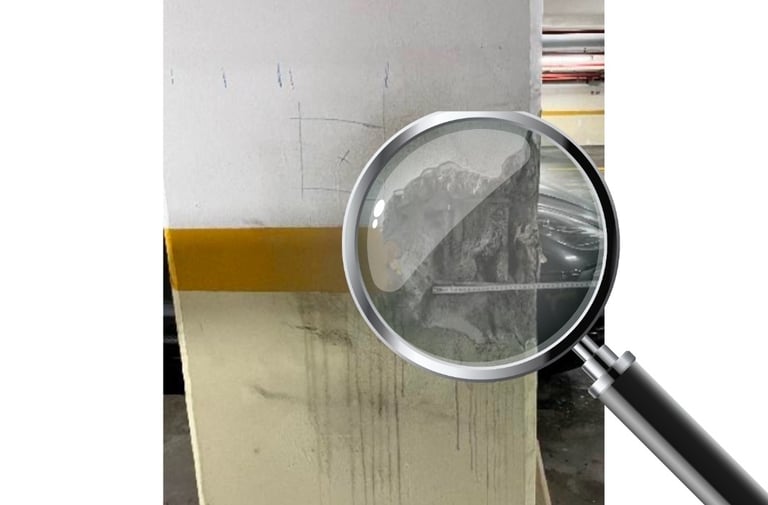

The studies conducted to collect information from existing buildings can be briefly categorized as destructive and non-destructive. These processes are carried out to enable the authorized engineer to obtain the necessary data for understanding and assessing the structural elements of the existing building.
Destructive Field Studies
The studies conducted to collect information from existing buildings can be broadly categorized as destructive and non-destructive. These processes are performed to allow the authorized engineer to obtain the necessary data for understanding and evaluating the structural elements of the building. In official studies, details regarding the quantity of these information-gathering activities are also provided. For studies conducted for informational purposes, the number of processes may be adjusted based on the discretion of the building owner and the authorized engineer. However, the primary goal remains to obtain material information about structural elements such as reinforced concrete and steel. In destructive field studies, controlled damage is temporarily inflicted on structural elements. However, when these studies are carried out under the supervision of an authorized engineer, no permanent damage is caused to the structural elements.
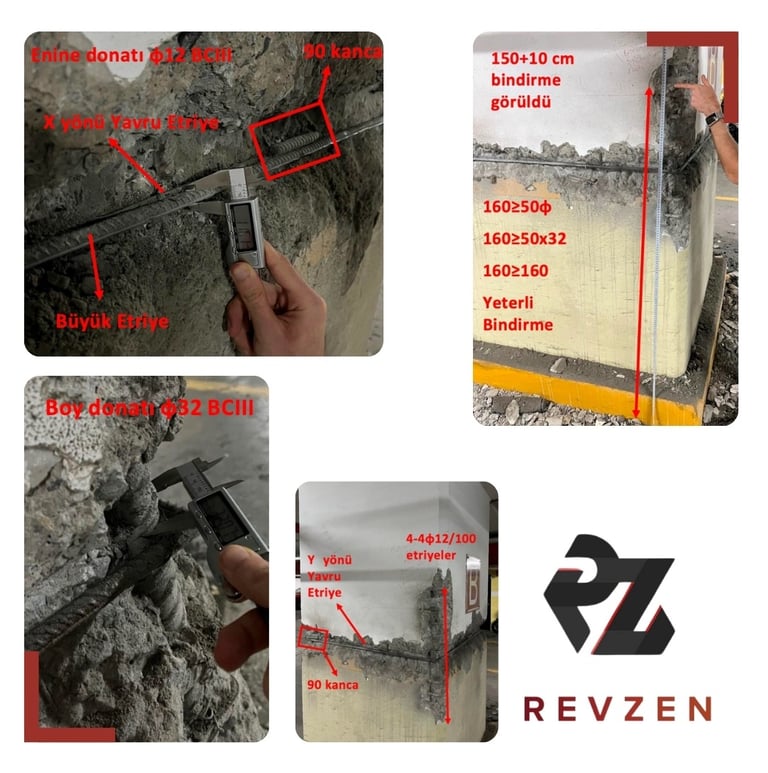

Concrete Scraping
Scraping is a process performed to gather information about the reinforcement layout, type, and workmanship in reinforced concrete elements. The cover concrete (protective layer) of the reinforced concrete element is removed using a breaker drill, exposing the reinforcements. The aspects inspected through this process can be summarized as follows:
· Stirrup and tie hook detail
· Adequacy of development length
· Reinforcement class
· Reinforcement arrangement details (transverse, longitudinal, number, and spacing of reinforcements)
The information obtained here is cross-checked against the structural design project of the building, if available. If no structural project exists, the authorized engineer determines the reinforcement layout based on the field studies conducted and the regulatory requirements.
Once all processes are completed, the reinforcements are cleaned, and the exposed area is covered with high-strength concrete repair mortar. After applying the mortar, plaster or finishing repairs should not be performed immediately. It is recommended to wait at least two days before carrying out fine finishing work.
Vibration
Environmental Wetting Rate
Noisy
Environmental Dustiness Rate
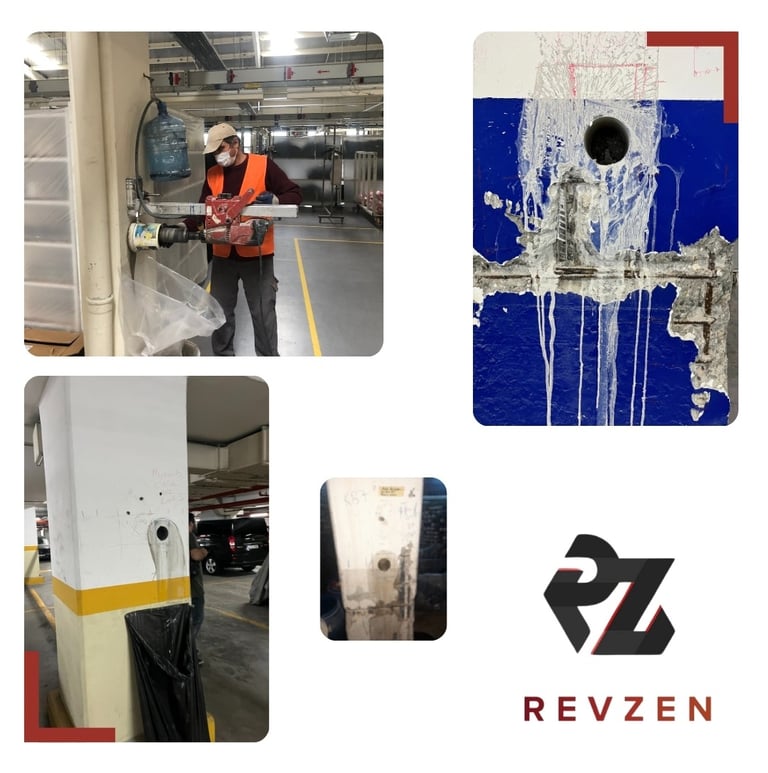

Core Sampling
Core sampling is performed to determine the existing compressive strength of concrete during the information-gathering process from reinforced concrete elements. A concrete sample is extracted from a region without reinforcement, which is identified and marked using an X-ray device. Key considerations during this process can be summarized as follows:
· The location of reinforcements must be accurately determined using the X-ray device.
· If any changes (e.g., noise, vibration) are detected in the operation of the core drilling machine during the process, the operation must be stopped, and the authorized engineer should verify whether the drill has encountered reinforcement.
· The sample should be at least 10 cm in length.
The information obtained from the core sample is compared to the compressive strength values in the structural design project, if available. The compressive strength determined is then used during the modeling phase. The number of samples must comply with regulatory guidelines and should be determined based on the number of structural elements and the building's plan area for official applications.
Titreşim Oranı
Çevre Tozlanma Oranı
Gürültü Oranı
Çevre Islanma Oranı
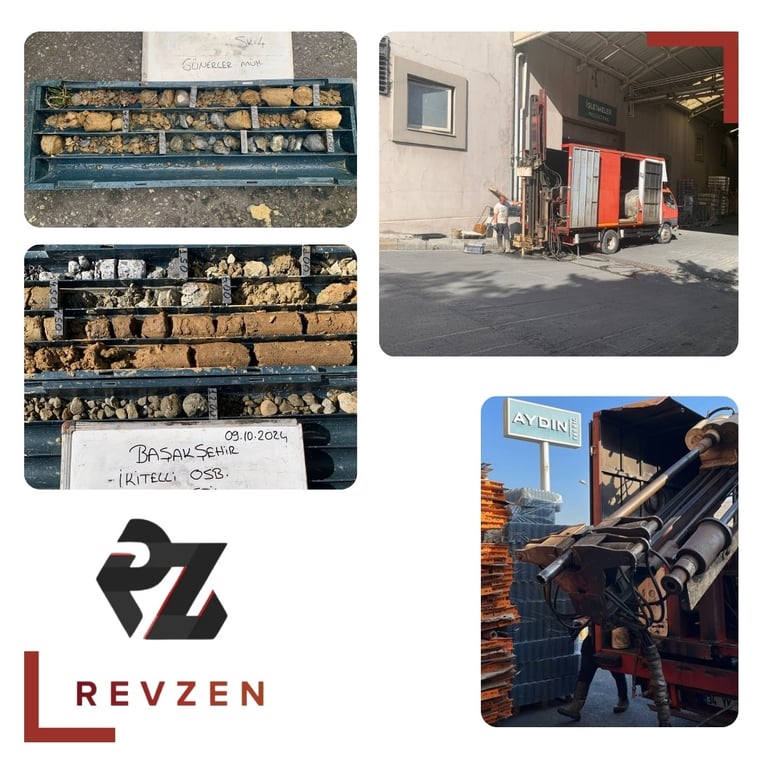

Bore Hole Drilling
Bore hole drilling is conducted to understand and analyze the soil mechanical properties of existing buildings. The data obtained from soil samples are used to prepare a soil data report and a geotechnical assessment report. These reports provide essential parameters required by earthquake engineers when evaluating the existing building.
Key considerations during the drilling process are as follows:
The drilling location should be chosen to avoid underground utilities such as natural gas, electricity, and water lines.
Suitable working areas closest to the existing building should be identified.
If work is being performed beneath the building, the foundation should not be damaged.
Titreşim Oranı
Çevre Tozlanma Oranı
Gürültü Oranı
Çevre Islanma Oranı
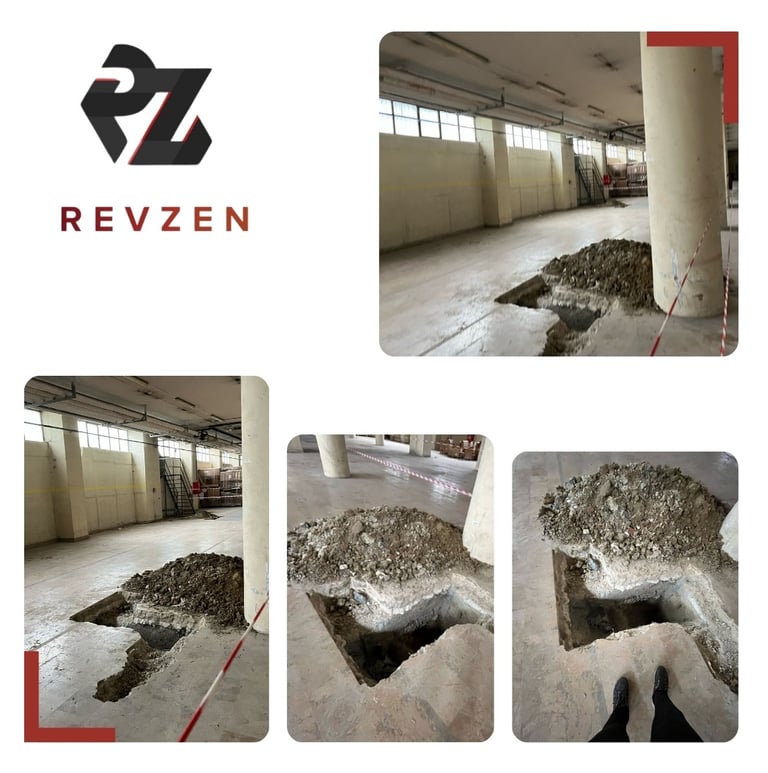

Foundation Pit
A foundation pit is excavated to gather information about the dimensions and layout of the foundation of an existing building.
The excavation should be conducted at the location that provides the most data regarding the general foundation layout.
Titreşim Oranı
Çevre Tozlanma Oranı
Gürültü Oranı
Çevre Islanma Oranı
Non-Destructive Field Studies
Information gathering from existing buildings is described in many regulations, including the TBDY 2018 (Turkish Earthquake Code) used in our country. In official studies, details regarding the quantity of these information-gathering activities are also shared. While the number of procedures can be adjusted according to the discretion of the building owner and the authorized engineer in studies conducted for informational purposes, the primary goal remains to obtain material information about structural elements such as reinforced concrete and steel.
The purpose of non-destructive tests is to understand whether the distribution of the data obtained from destructive tests is homogeneous across the entire structure and to increase the amount of available data.
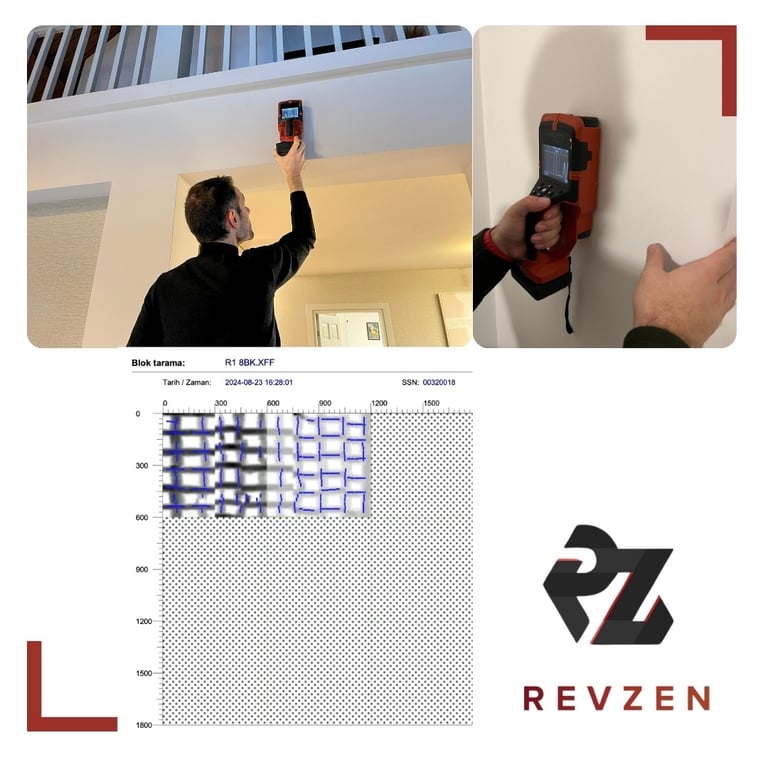

Titreşim Oranı
Çevre Tozlanma Oranı
Gürültü Oranı
Çevre Islanma Oranı
Concrete Scanning
Concrete scanning process is performed on existing buildings to gather more information about the reinforcement layout in reinforced concrete elements. When combined with the concrete scraping (clear cover crushing) process, it helps determine the homogeneity of the data collected from the existing building. Since it is a non-destructive method, information can be gathered from a large number of elements using an scanning device.
Key considerations during concrete scanning are as follows:
· The process should be performed on structural elements.
· Unlike the scraping process, which is physical, the results of the scanning test must be clear and should be verified during the testing.
· In structural elements with a thick plaster layer, the scan values may vary, so the region with a thinner plaster layer should be selected for the test.

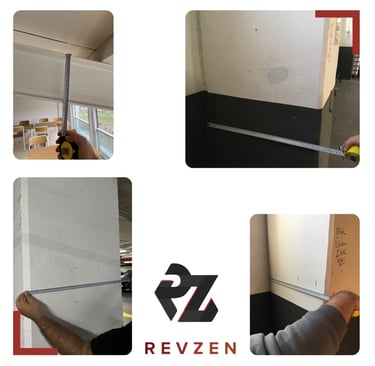
Titreşim Oranı
Çevre Tozlanma Oranı
Gürültü Oranı
Çevre Islanma Oranı
As-Built Survey (Design and Control)
The as-built survey is conducted to check the geometry of the building and gather information about the dimensions of structural elements. If existing projects are available, the survey is carried out to confirm their accuracy. If no existing projects are available, the survey is used to create a new formwork plan. In some cases, the surroundings of structural elements may be concealed for architectural reasons. In such cases, the authorized engineer may need to perform demolition to clearly identify the dimensions of the relevant structural element.
Key considerations during the as-built survey include:
· The dimensions of structural elements should be measured, and their positions should be accurately determined.
· All floors of the building must be accessed, and all details should be checked.
· Any structural damage should be identified and documented in the survey.
· Non-structural details that may pose a risk in an earthquake should be checked and included in the survey.
· A project should be drawn using all gathered data and documented with the authorized engineer’s signature.

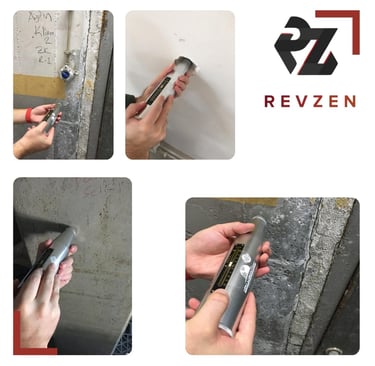
Titreşim Oranı
Çevre Tozlanma Oranı
Gürültü Oranı
Çevre Islanma Oranı
Schmidt Hammer Test
The Schmidt Hammer test is performed to gather information about the concrete strength used in the reinforced concrete elements of the building. In comprehensive assessments, this test is conducted alongside core testing to increase the data obtained and to confirm the homogeneity of the core results' distribution. While this method may not provide results as precise as core testing, it helps to understand the distribution and general condition of the concrete in the building. To perform this test, the plaster or surface of the structural element is broken enough to expose the concrete surface, where the test is then conducted.
Key considerations during the Schmidt Hammer test are as follows:
· Ensure that the test is conducted on structural elements.
· The presence of reinforcement behind the concrete surface should be checked using an X-ray device, and testing should be done in areas without reinforcement.
· The test should not be performed on structural elements affected by moisture, corrosion, carbonation, or similar issues; such areas should be avoided.
· The test should be repeated at least 10 times in one area.
· All gathered data should be incorporated into the project and documented with the authorized engineer’s signature.
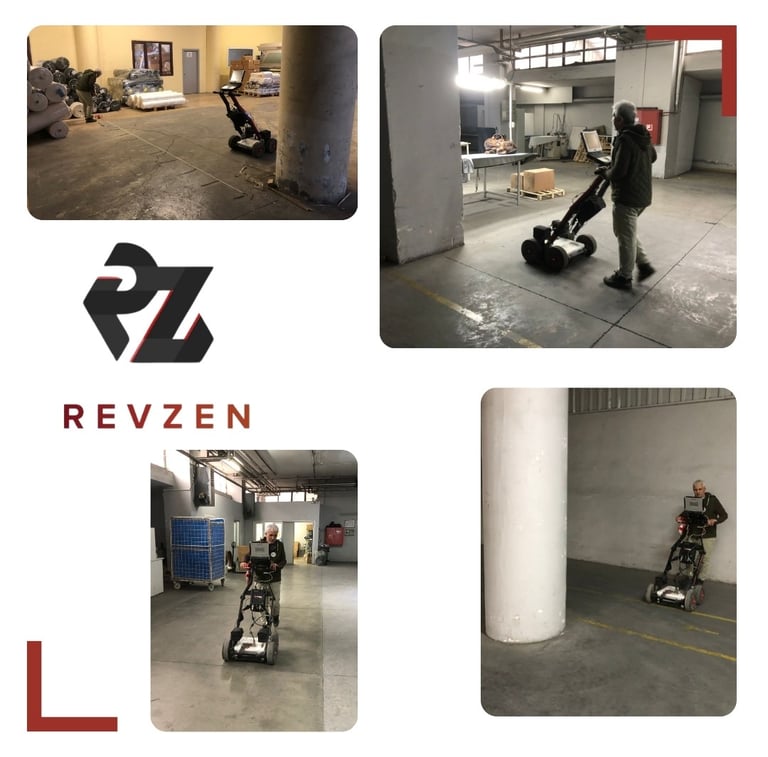

Titreşim Oranı
Çevre Tozlanma Oranı
Gürültü Oranı
Çevre Islanma Oranı
GPR Test (Ground Penetrating Radar)
The GPR (Ground Penetrating Radar) test is performed to gather information about the building's foundation system. This non-destructive process allows for the determination of the foundation layout and dimensions, and the more points tested, the more accurate the data obtained.
Key considerations during the GPR test are as follows:
· The test should be performed from points where foundation information can be accurately understood from within the building.
· It should be conducted under the supervision of an authorized geologist and civil engineer.
· The results should be monitored in real-time, and the process should continue based on these checks.
· A project should be drawn using all gathered data and documented with the authorized engineer’s signature.

